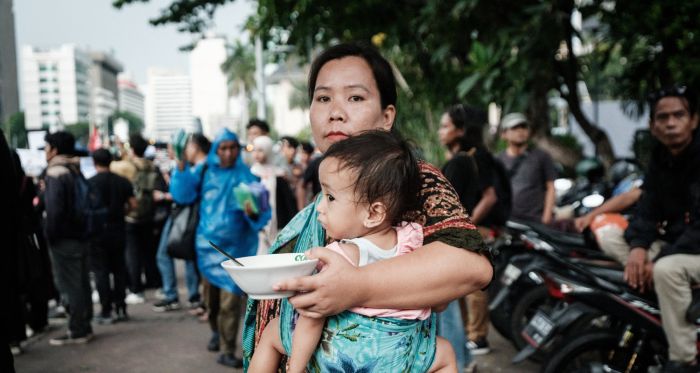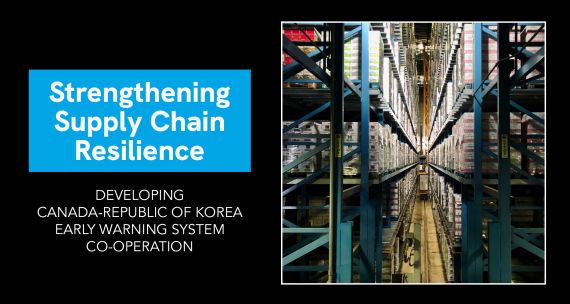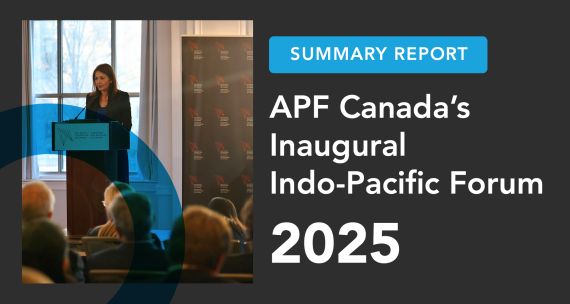Canada’s approach to international development is intrinsically linked to its broader foreign policy, rooted in the belief that global stability and prosperity enhance the safety and economic well-being of Canadians at home. This approach is codified in Canada’s Feminist International Assistance Policy (FIAP), which seeks to eradicate poverty and build a more peaceful, inclusive, and prosperous world.
At the core of the FIAP is the principle that promoting gender equality and empowering women and girls is the single most effective way to achieve this overarching goal. Indeed, women’s rights, including sexual and reproductive rights, are positioned as central to Canada's foreign policy. The FIAP is structured around six interconnected action areas: Gender Equality and the Empowerment of Women and Girls (the core area); Human Dignity (including health, nutrition, and humanitarian action); Growth that Works for Everyone; Environment and Climate Action; Inclusive Governance; and Peace and Security. With FIAP as a foundation, Canada has made commitments to promote inclusive development in the Indo-Pacific region.
The Indo-Pacific: A Generational Priority
Canada has identified the Indo-Pacific region as key to shaping its future over the next half-century. The region is rapidly becoming the global centre of economic dynamism and a major strategic challenge. Economically, the Indo-Pacific encompasses 40 economies, more than four billion people, and C$47.2 trillion in activity. By 2040, the region is projected to account for more than half of the global economy.
Canada boasts a 25,000-kilometre Pacific coastline and has welcomed large numbers of immigrants from the Indo-Pacific. The region’s strategic importance is amplified by challenges such as deepening great power competition, rising inter-state tensions, climate change, and biodiversity loss. Canada’s engagement, formalized in the 2022 Indo-Pacific Strategy (IPS), is a whole-of-society response aimed at seizing opportunities while defending Canadian values.
Where the Money Goes
In the fiscal year 2023–24, the Government of Canada disbursed C$11.1 billion in international assistance, of which C$9 billion was considered official development assistance (ODA). The following bar graph shows the 20 leading recipient countries of Canadian international development assistance (in C$), just two of which are in Southeast or South Asia:
The IPS is supported by new investments of nearly C$2.3 billion over five years. Development commitments focus on advancing the Sustainable Development Goals (SDGs) while upholding the FIAP. Key focus areas within the Indo-Pacific align with the FIAP pillars:
1. Climate Action and Green Future: Canada is committed to building a sustainable and green future by sharing expertise in clean technology, oceans management, and climate finance. Further, it will prioritize the Indo-Pacific in the Powering Past Coal Alliance, supporting partners’ transition from coal to clean energy.
2. Peace, Resilience, and Security: Canada addresses security challenges, including countering illegal, unreported, and unregulated fishing through programs such as the Dark Vessel Detection program. Canada intends to keep building de-mining capacity in countries like Laos and Cambodia.
3. Investing in People: In the ASEAN region, Canada is deepening co-operation with several countries, including Indonesia, the Philippines, and Vietnam. For example, Canada funds the Canada-ASEAN Scholarships and Educational Exchanges for Development Program to strengthen educational ties.
Last year, Canada contributed C$10 million to help launch Phase 3 of the Canada-ASEAN collaboration on the Mitigation of Biological Threats (MBT) Program. This brought total collaboration funding over 10 years to C$36.6 million. This program has strengthened the health-security capacities of member states to prevent, detect, and respond to biological threats, minimizing economic loss and social impacts. In addition, Canada announced more than C$28 million in funding to the Philippines to support nature-based solutions to climate change and biodiversity loss and increased health-care services.
Further, in June 2024 Canada announced its intention to provide up to C$350 million in concessional financing and up to C$10 million in technical assistance to the Asian Development Bank to establish the Canadian Climate and Nature Fund for the Private Sector in Asia (CANPA). CANPA aims to stimulate private sector investment in climate and nature-based solutions that advance gender equality across the Indo-Pacific region, especially in developing countries and small island developing states.
Canadian-funded projects have generated significant results, particularly in environmental resilience, governance, and energy transition. For example, the three phases of Canada’s Climate Fund for the Private Sector in Asia (including CANPA) have catalyzed private investment in climate change mitigation and adaptation. Earlier funds supported the Monsoon Wind Power Project (Laos–Vietnam), the first cross-border wind project in Asia.
In Cambodia, Canadian funding supported the construction of a 10.5-megawatt solar power plant in Bavet, the country's first utility-scale solar photovoltaic project. Development programming in Vietnam is supporting the economic inclusion of vulnerable communities, including ethnic minorities and marginalized women, through vocational training and access to finance. Further, a Canada-led project within the Asia-Pacific Economic Cooperation forum is helping to empower micro, small, and medium-sized enterprises by emphasizing their critical role in international standards development and encouraging participation in international trade.
Canada’s Development Aims, Regional Objectives are Mutually Supportive
In an era of shifting global power dynamics, the purpose and value of development assistance have come under intense scrutiny. Yet budgetary support for low- and middle-income countries is not a charitable act — it is a strategic investment and valuable instrument for advancing Canada’s national interests. By providing development assistance to this dynamic and complex region, Canada not only fulfills a humanitarian duty but actively secures its own future prosperity and security.
The IPS responds to the region's rising global influence. The strategy is a comprehensive framework built on five interconnected objectives, two of which — promoting peace, resilience, and security (Pillar One) and expanding trade, investment, and supply chain resilience (Pillar Two) — are directly supported by strategic development assistance.
For Pillar One, foreign aid is a powerful tool for promoting stability. Development projects that build local capacity to address threats such as climate change, food insecurity, and public health crises are a form of preventive security. They foster resilience within communities, reducing the likelihood of conflict and humanitarian crises that could destabilize the region and impact global security. For instance, funding for programs that strengthen health systems can mitigate the spread of infectious diseases, protecting not only the local population but also Canadians at home, as the recent pandemic demonstrated.
Similarly, development assistance underpins Pillar Two by creating a more predictable and stable environment for Canadian businesses. By fostering economic growth and strengthening governance, aid helps to build reliable partnerships and open new markets. Aid also helps to diversify Canada's supply chains, reducing the country’s economic overreliance on a small number of trading partners and insulating its economy from geopolitical shocks. This interconnected approach ensures that development assistance is not separate from Canada’s economic interests but is, in fact, an essential catalyst for them.
Maintaining Canada’s Commitment to Development
While the direct benefits to recipient countries are clear, providing development assistance also yields positive returns for Canada. It allows Canada to build strategic partnerships beyond its traditional trade relationships, fostering diplomatic and economic clout. As other traditional donors retreat from the global stage, Canada's sustained and visible engagement creates goodwill and strengthens diplomatic ties. This soft power helps Canada project influence, gain a seat at the table on important regional issues, and position itself as a reliable and trusted partner.
Were Canada to follow other donors and cut development assistance at this time, it would reduce its growing global clout, devalue a useful tool for advancing IPS goals, and undermine its commitment to global goals. Through its development assistance program, Canada reinforces its reputation as a leader in humanitarian efforts and peacekeeping, a brand that is a core part of its national identity. This reputation can translate into a competitive advantage in a region of growing geopolitical importance, facilitating future trade agreements and economic co-operation.
Canadians should care about international development because their future is inextricably linked to the world's future. In an increasingly interconnected global system, challenges such as climate change, infectious diseases, and economic instability do not respect national borders. A crisis in the Indo-Pacific can quickly become a global one, affecting Canadians' health, economic stability, and security.
Furthermore, public opinion surveys consistently show strong support for international assistance. Most Canadians believe that working with other countries to solve global problems is in Canada's best interest. Providing aid is seen as a moral duty and a way to help create a more stable and prosperous world for all.
A Time for Leadership
The global context makes Canada’s role more critical. Major donors, including the U.S., France, Germany, and the U.K., have cut ODA. The effective closure of USAID and other aid cuts have created a massive void with humanitarian, economic, and geopolitical consequences. This retreat could create space for authoritarian powers to fill. Such actors may use aid to expand influence and impose rules at odds with Canadian values of democracy, human rights, and the rule of law.
Canada cannot fill the gap alone but can lead by maintaining its development commitment, convening donors, and co-ordinating action. Upholding its role supports vulnerable communities, strengthens Canada’s strategic position, and preserves its reputation as a trusted global partner. Development is thus both principled and pragmatic, advancing peace and prosperity for the Indo-Pacific and Canada alike.
Canada’s development assistance programs support the IPS’s advances by promoting sustainable, inclusive growth, and resilience. Investments in climate, digital innovation, health, and gender equality improve security and opportunity, while fostering rules-based governance. Partnerships expand trade, people-to-people ties, and stability. Aligning aid with local priorities and multilateral initiatives builds trust and influence across the Indo-Pacific.
Development assistance also boosts trade, investment, and supply chain resilience by supporting infrastructure development, digital connectivity, and skills. Targeted aid enhances regulatory alignment, sustainable resource use, and climate-smart agriculture. By fostering inclusive growth, empowering women, and building institutions, Canada creates stable markets. Working with regional bodies and multilateral development banks, aid catalyzes private investment, deepens integration, and builds trusted partnerships — reinforcing Canada’s role as a reliable Indo-Pacific partner.
If Canada follows other donors in cutting aid, it risks losing influence and credibility, weakening partnerships with the Global South, and leaving space for rivals. Such cuts could also undermine climate, health, and gender priorities central to Canada’s global identity and reduce opportunities for Canadian businesses, researchers, and civil society.
Canada can learn from Australia’s evolving Indo-Pacific approach, which emphasizes locally led development and recognizes diverse, sometimes competing, change pathways. Its integration of climate and gender targets, stronger civil society engagement, and humanitarian readiness align aid with partner priorities while advancing foreign policy goals. Canada can sharpen its engagement by embedding learning, elevating local voices, and balancing global values with regional sensitivities.
Given the upheaval in international development, Canada must adapt. Support for developing countries must be consistently viewed more broadly than grant-based programs, which retain a vital role, but have their limitations. Canada’s support for developing countries should increasingly focus on nurturing local ownership and capacity. This means helping low- and middle-income countries to more effectively mobilize domestic resources, including through improved tax administration, contributing to international efforts to reduce crushing debt burdens, and improving access by developing countries to international capital markets.
By acting to reduce remittance fees, leverage private capital through government guarantees, engage philanthropy, and step up engagement with the multilateral development banks, Canada can boost its positive impact in the Indo-Pacific. Canada needs to align foreign aid with national interests while sustaining humanitarian commitments to strengthen both its position and influence in the region.
Now is the moment for Canada to assert leadership as others withdraw. A robust, strategic development assistance program in the Indo-Pacific will promote inclusive growth, tackle climate change, and forge economic partnerships — building resilience and security for a more stable and prosperous future for the region and Canada.





